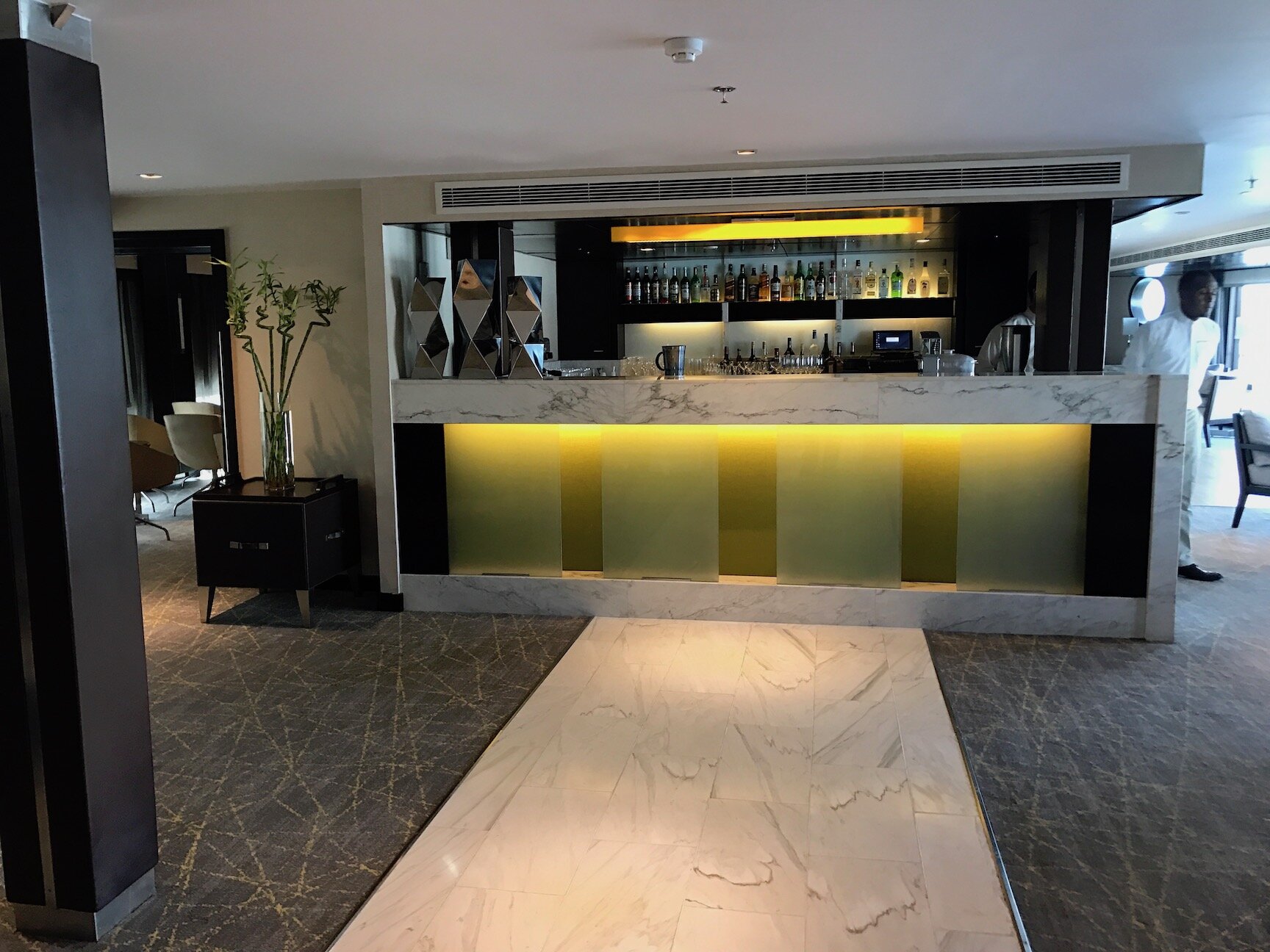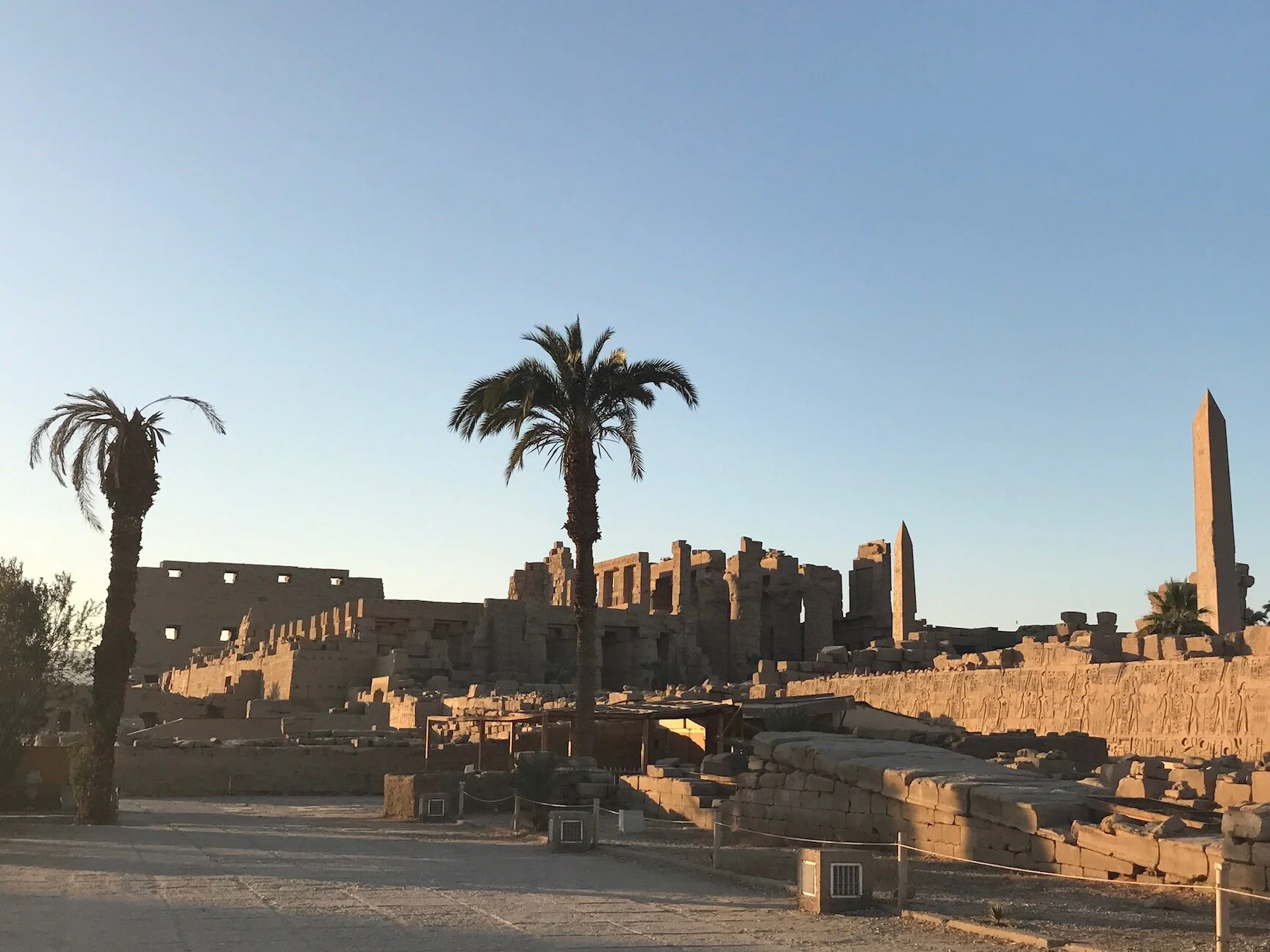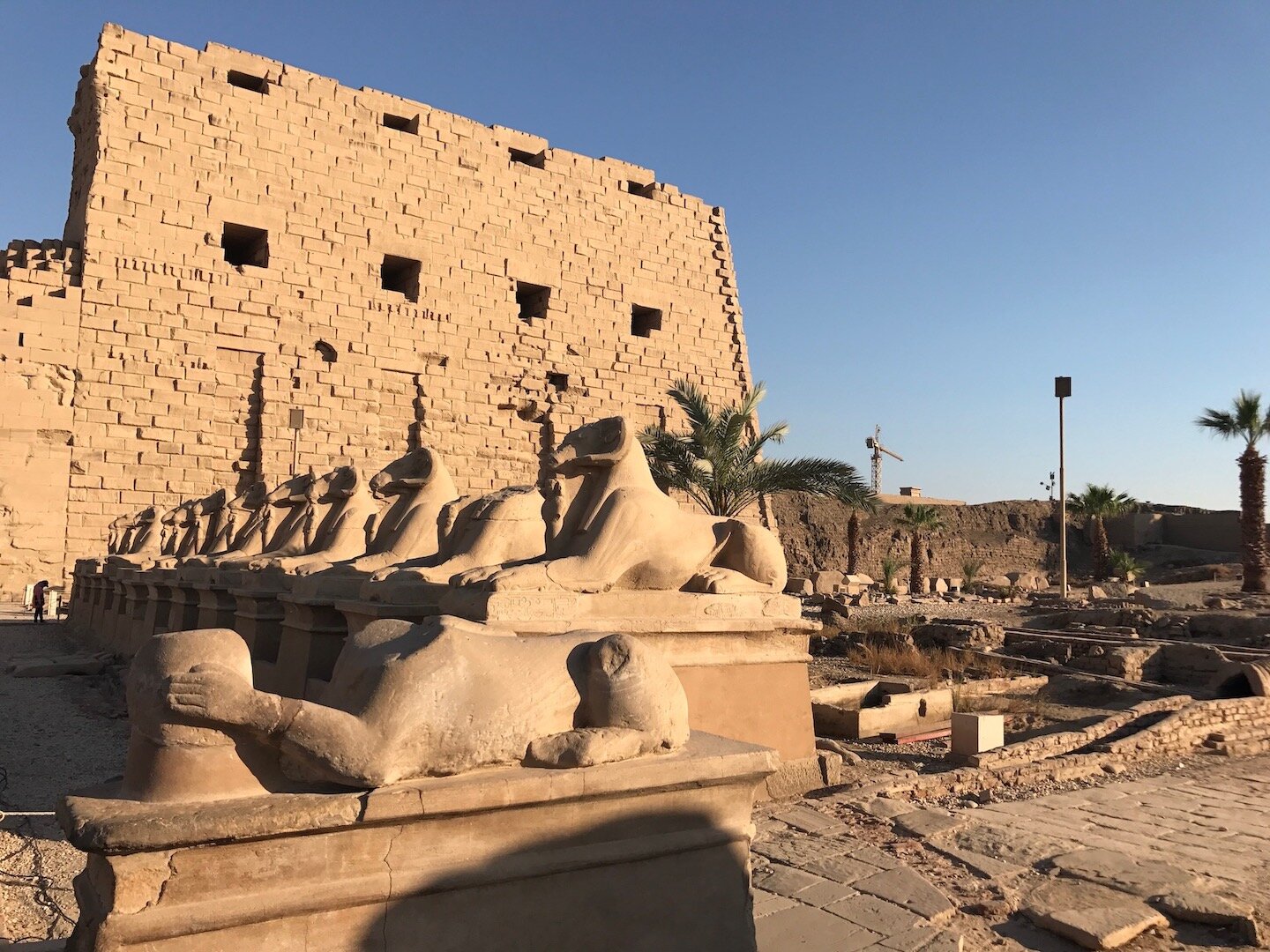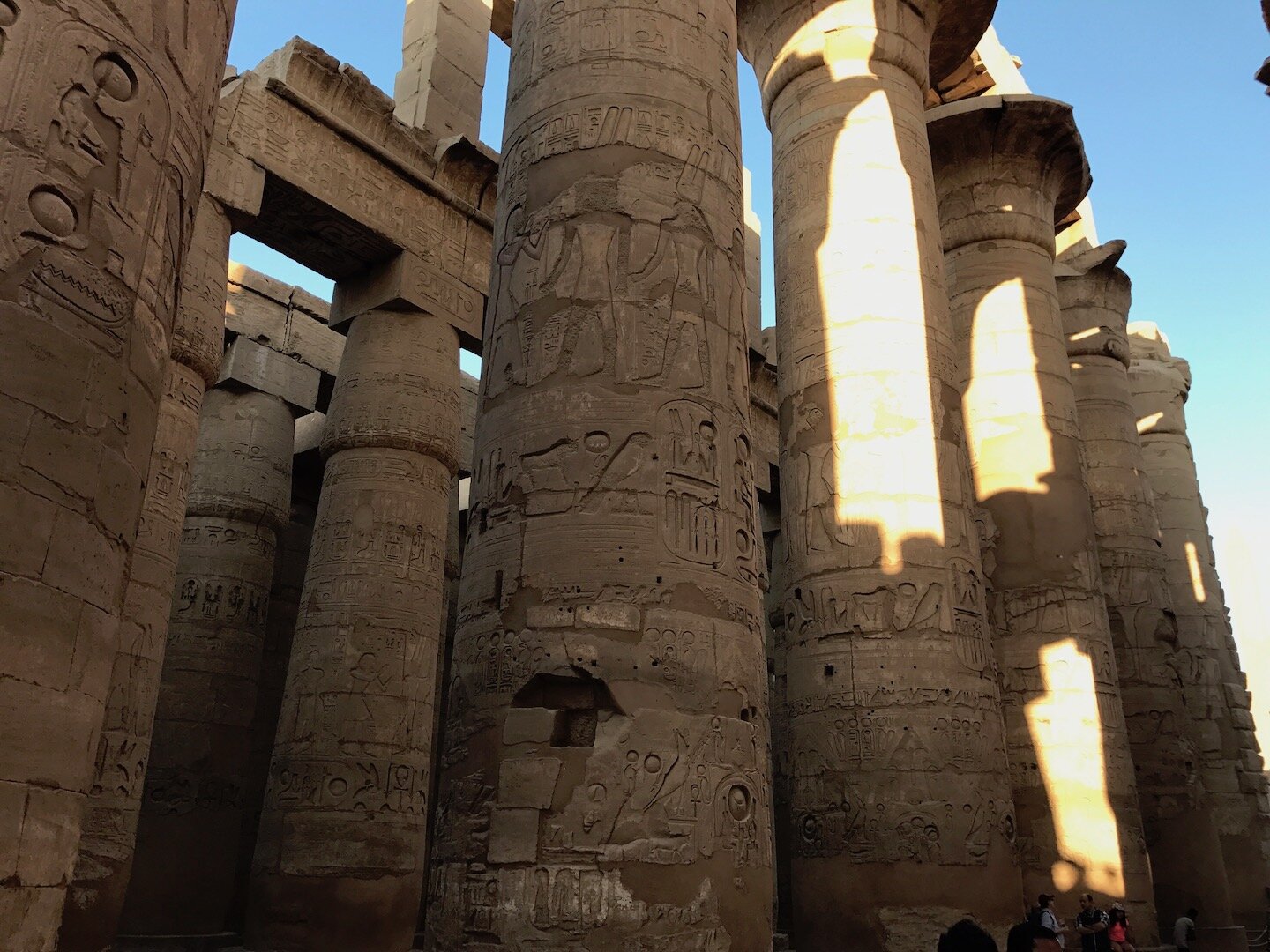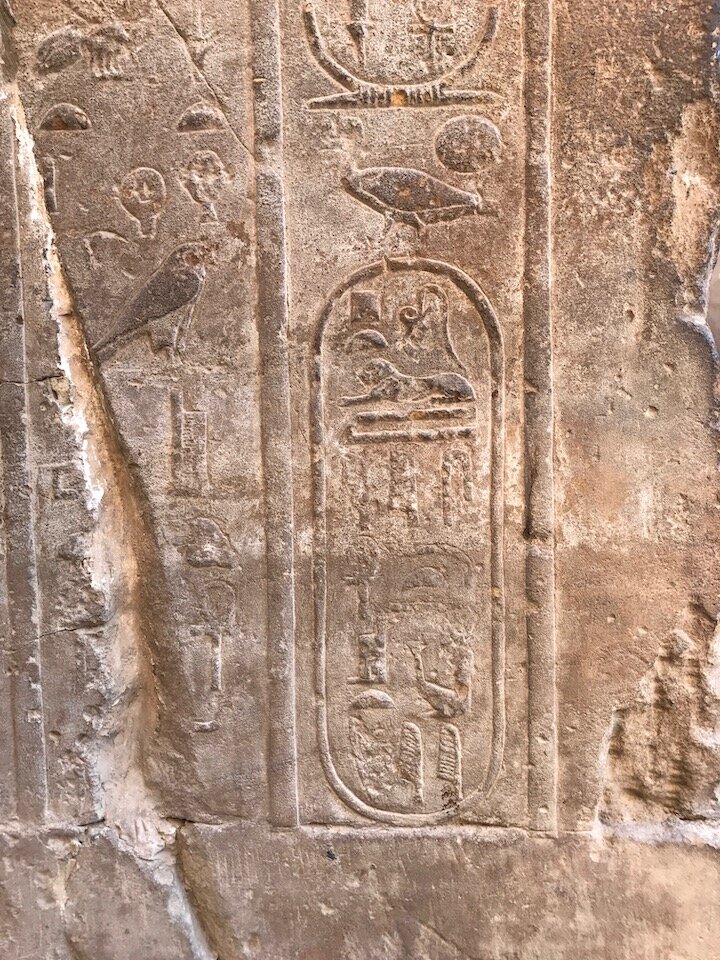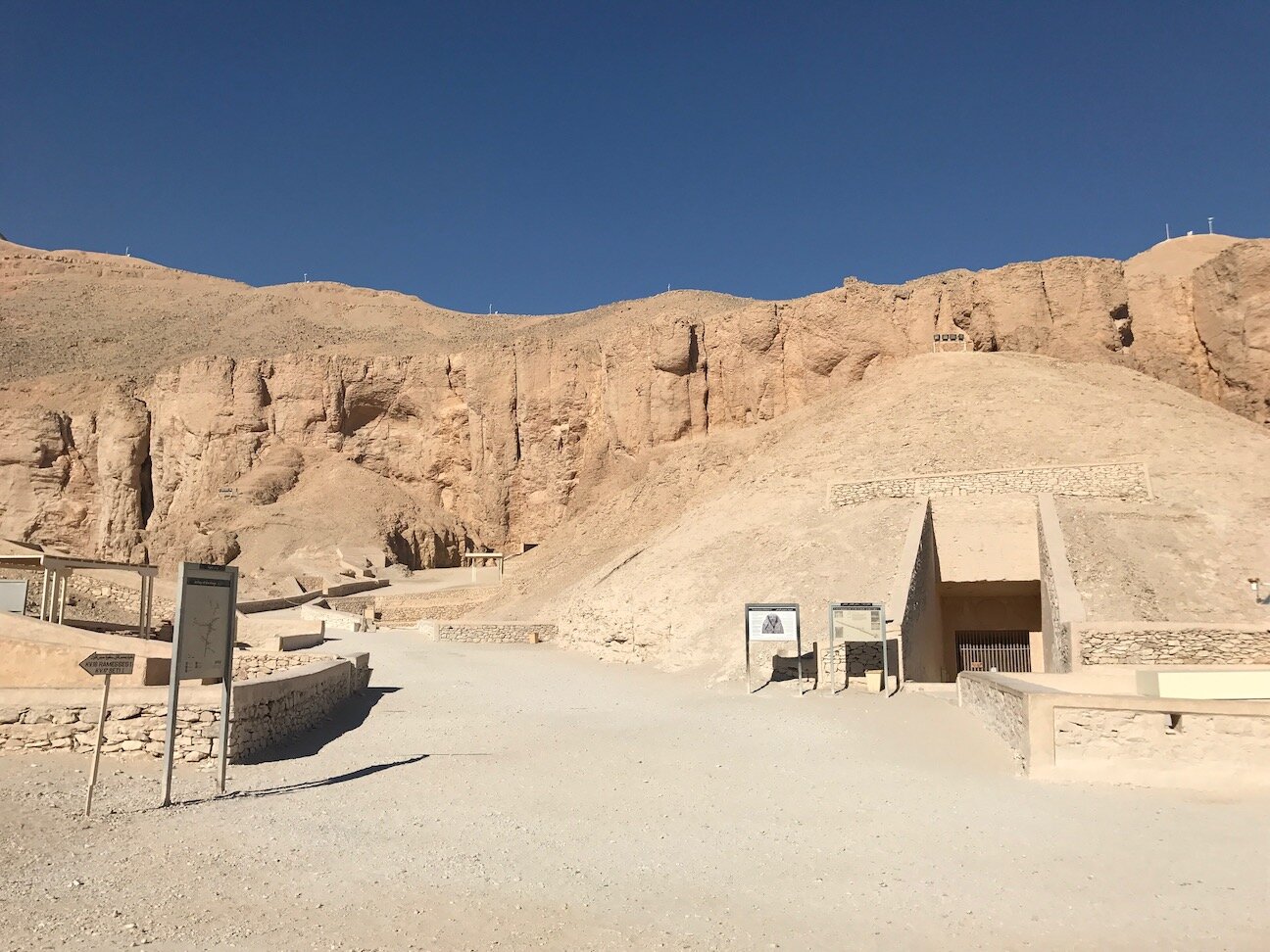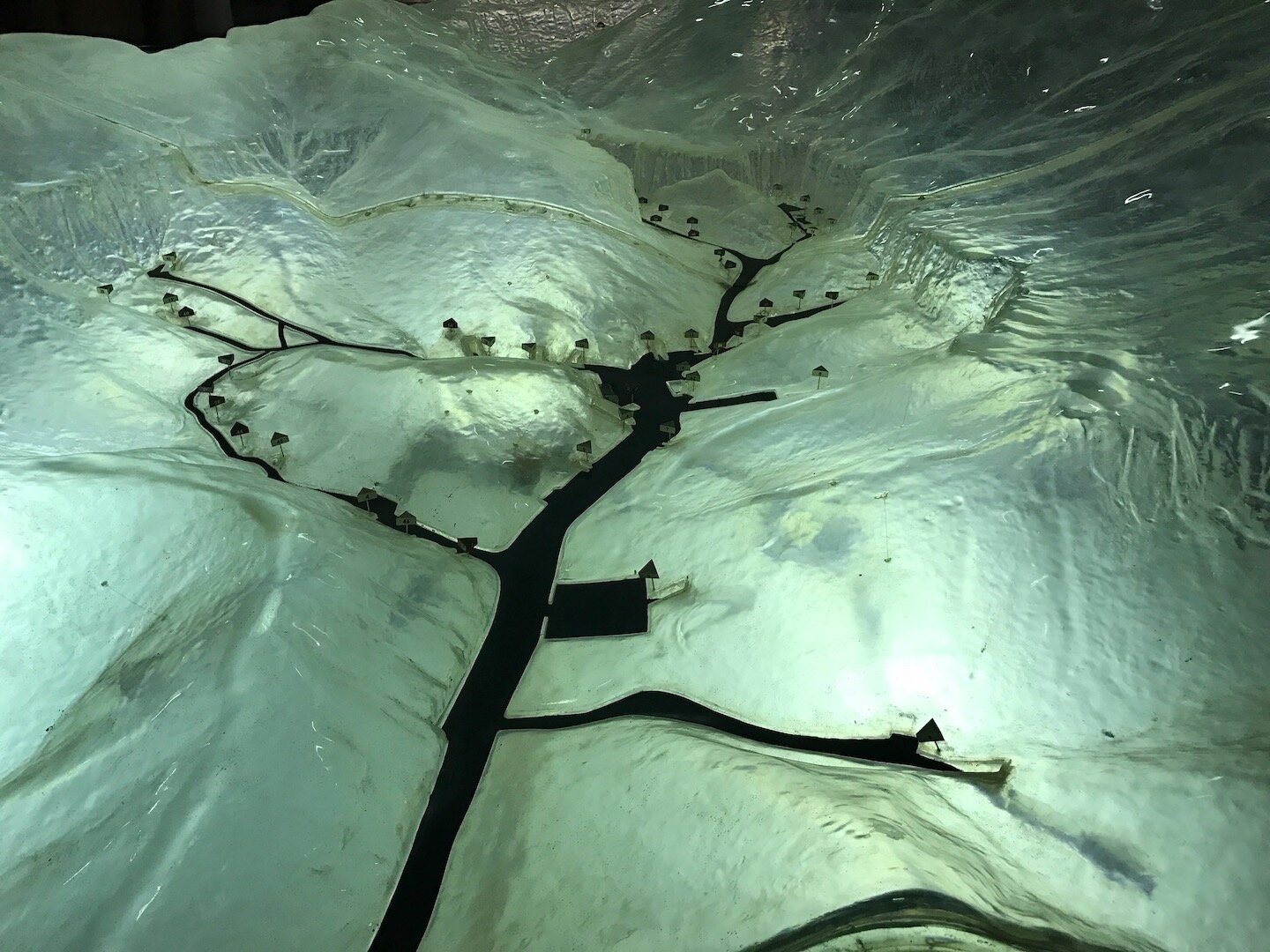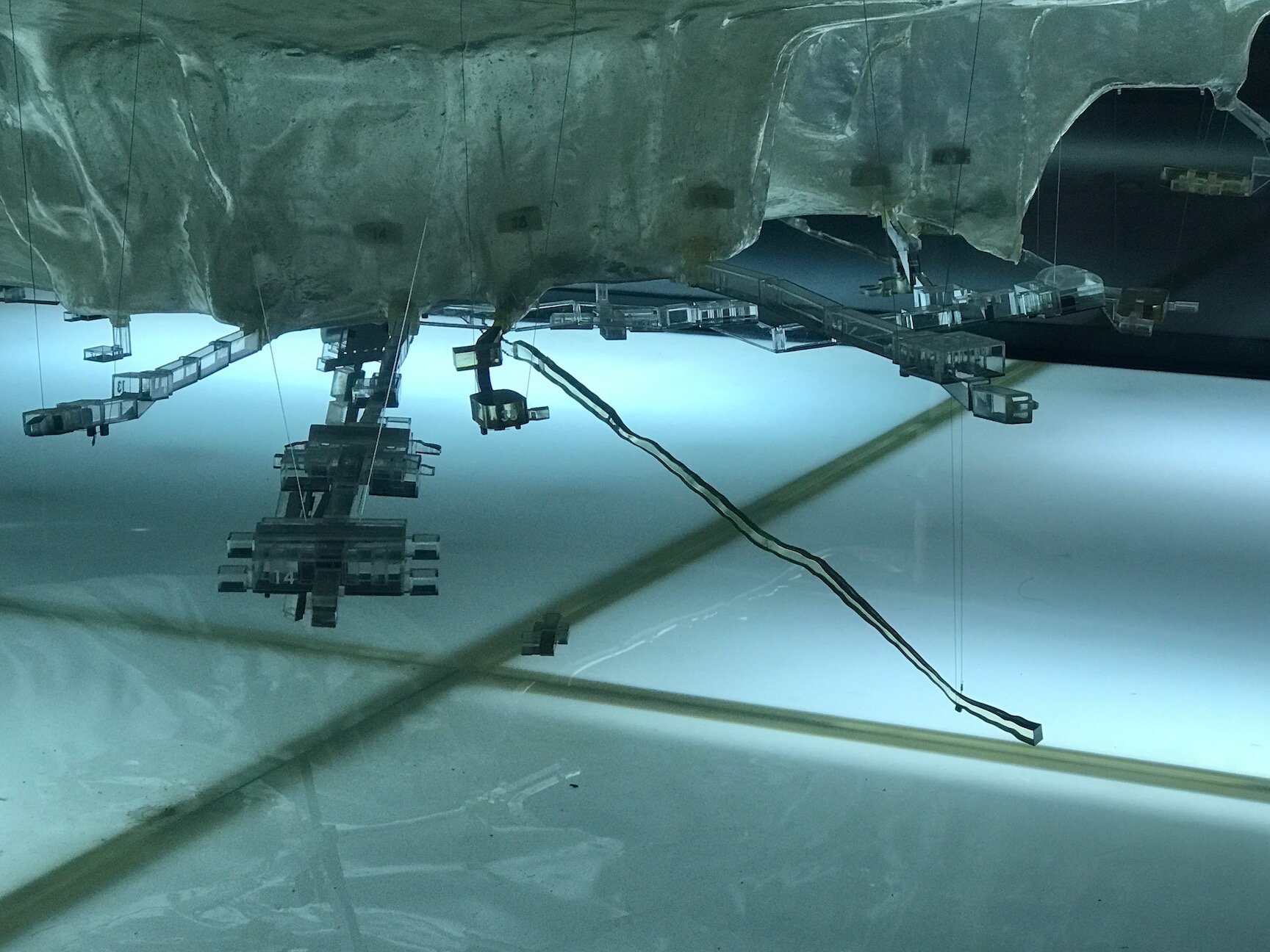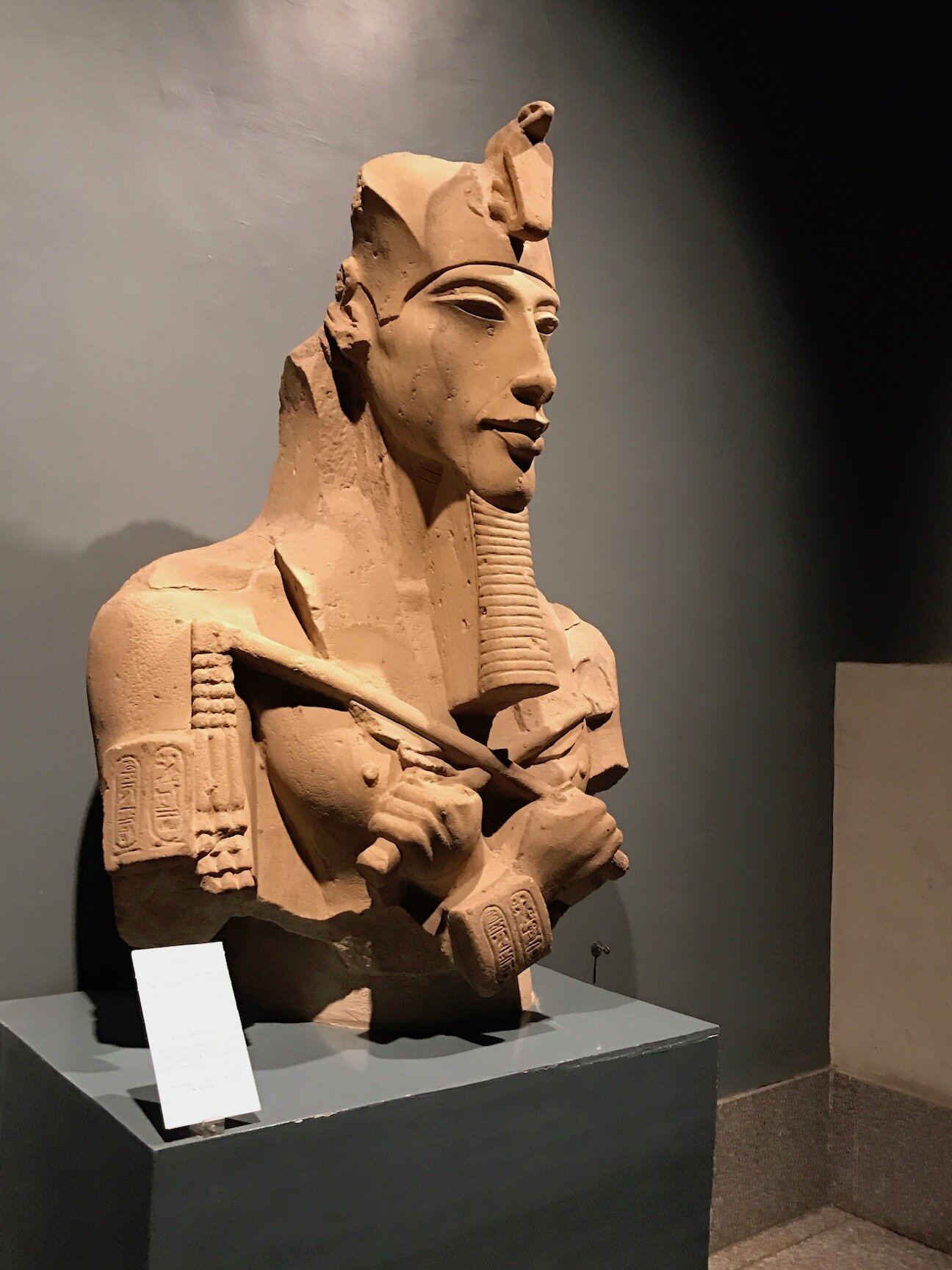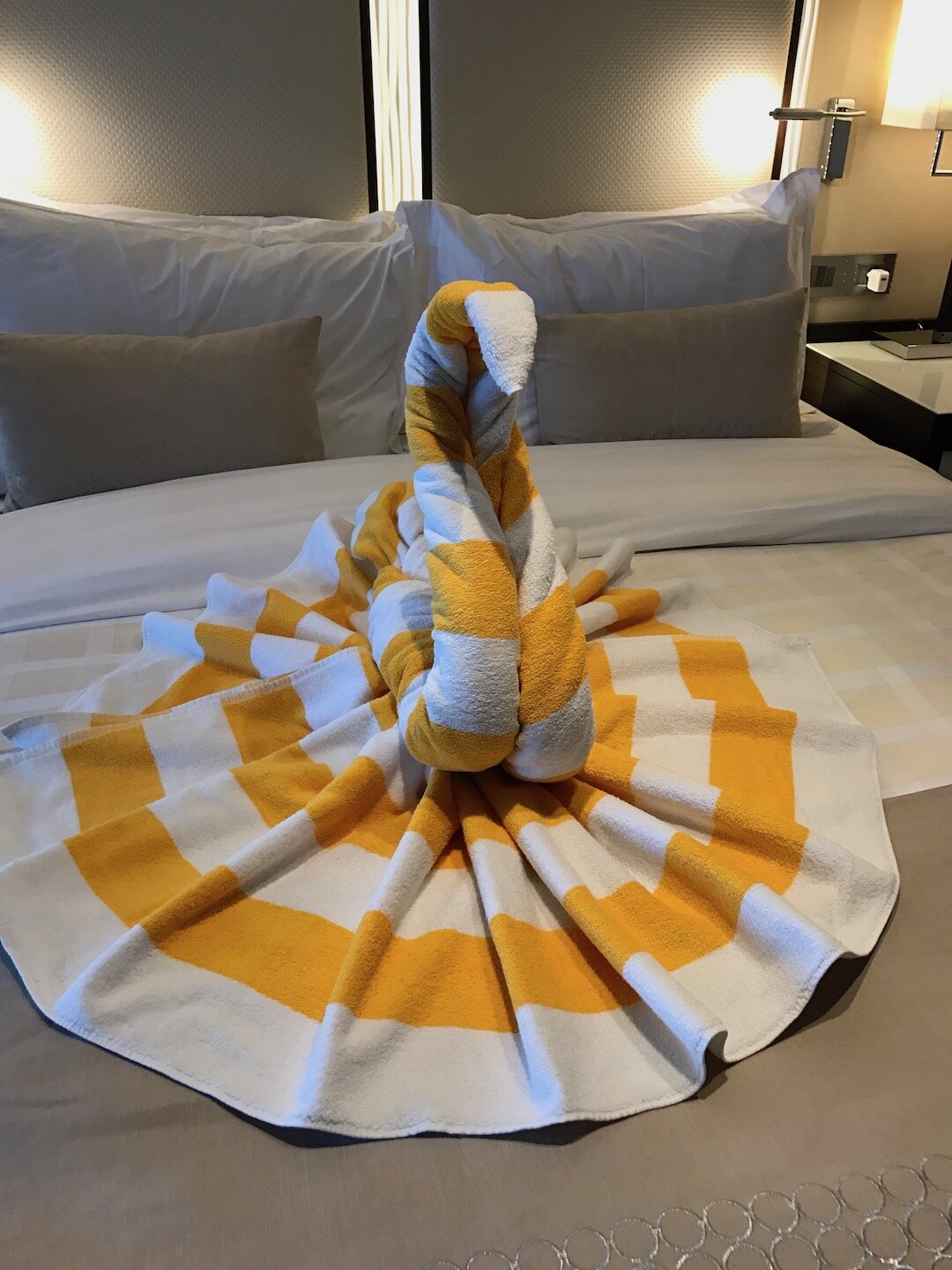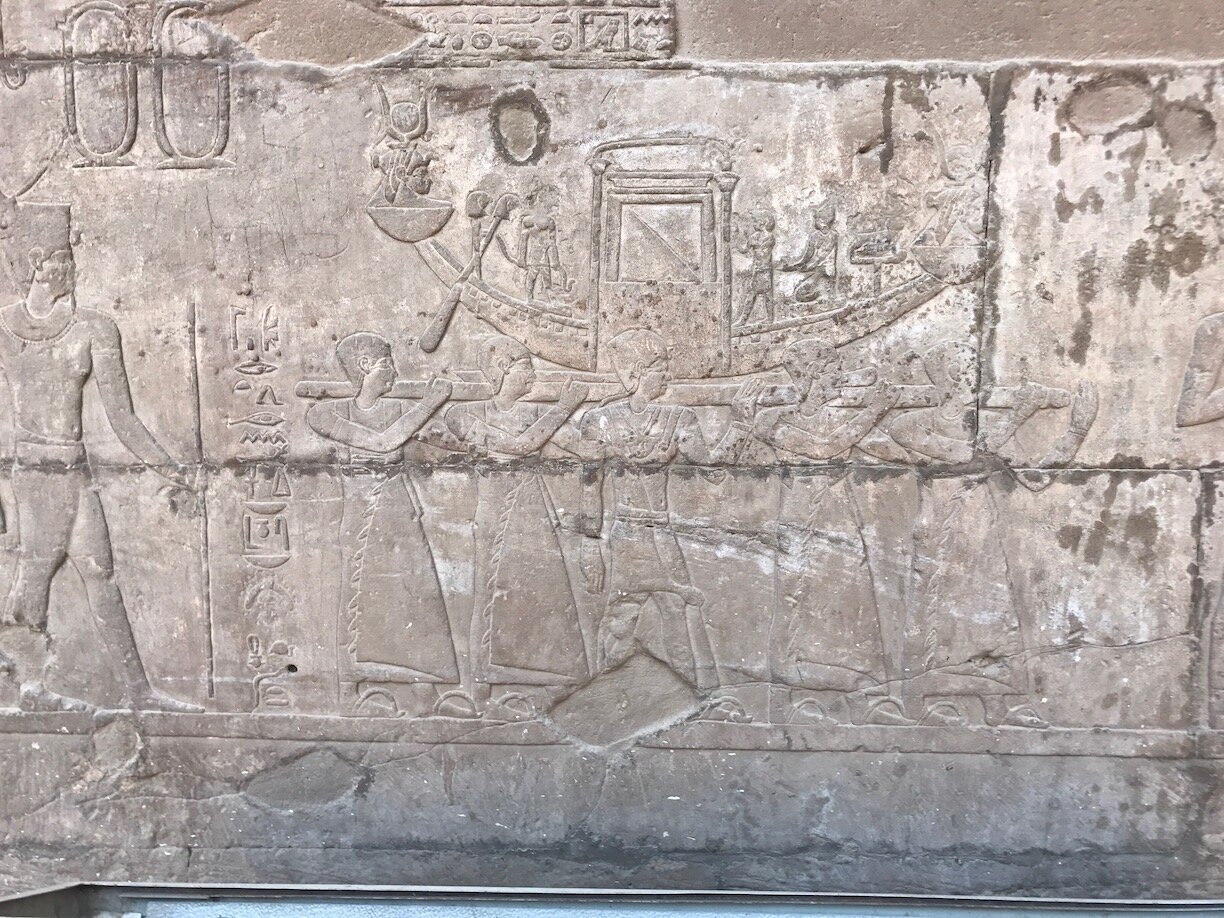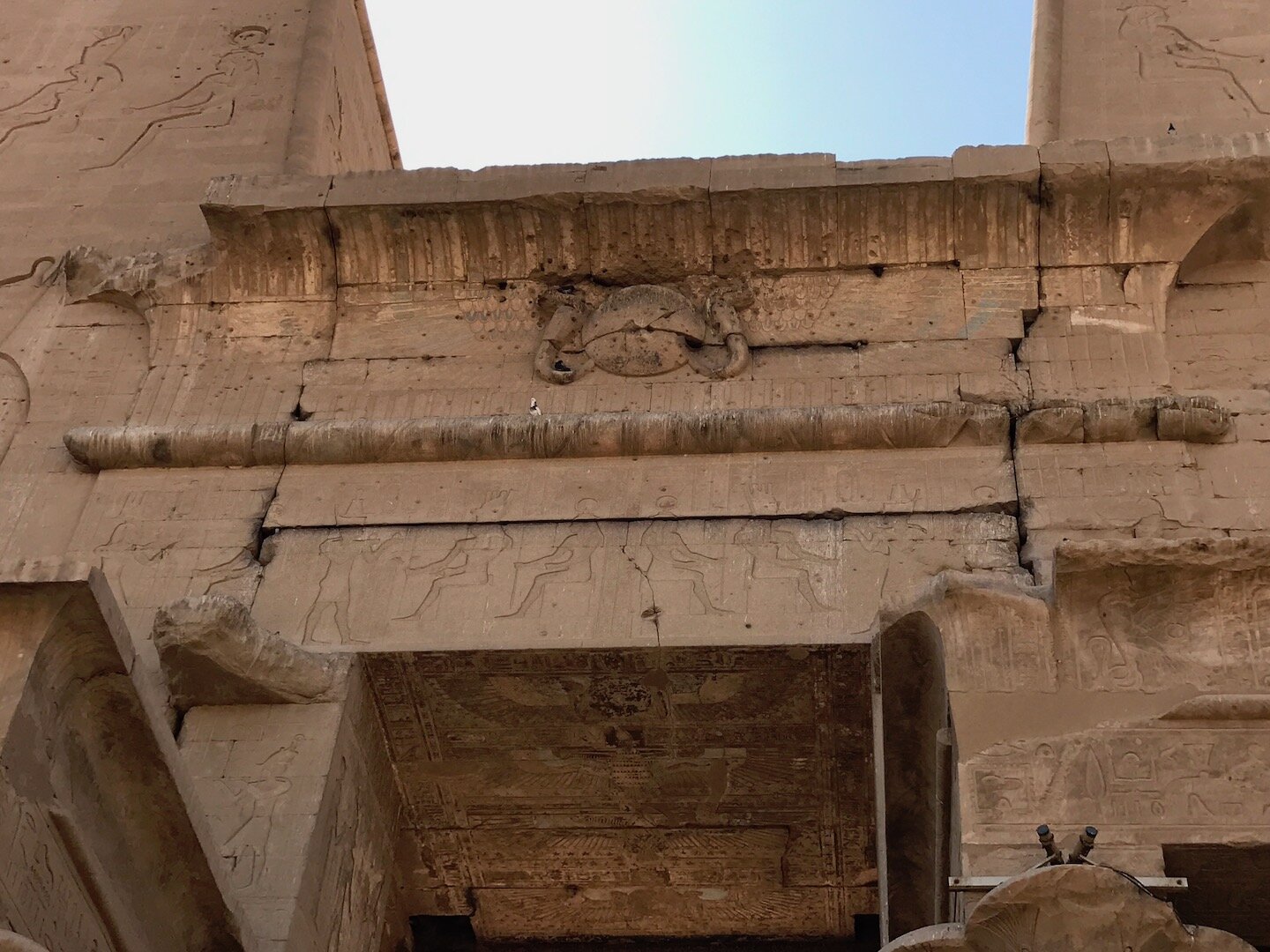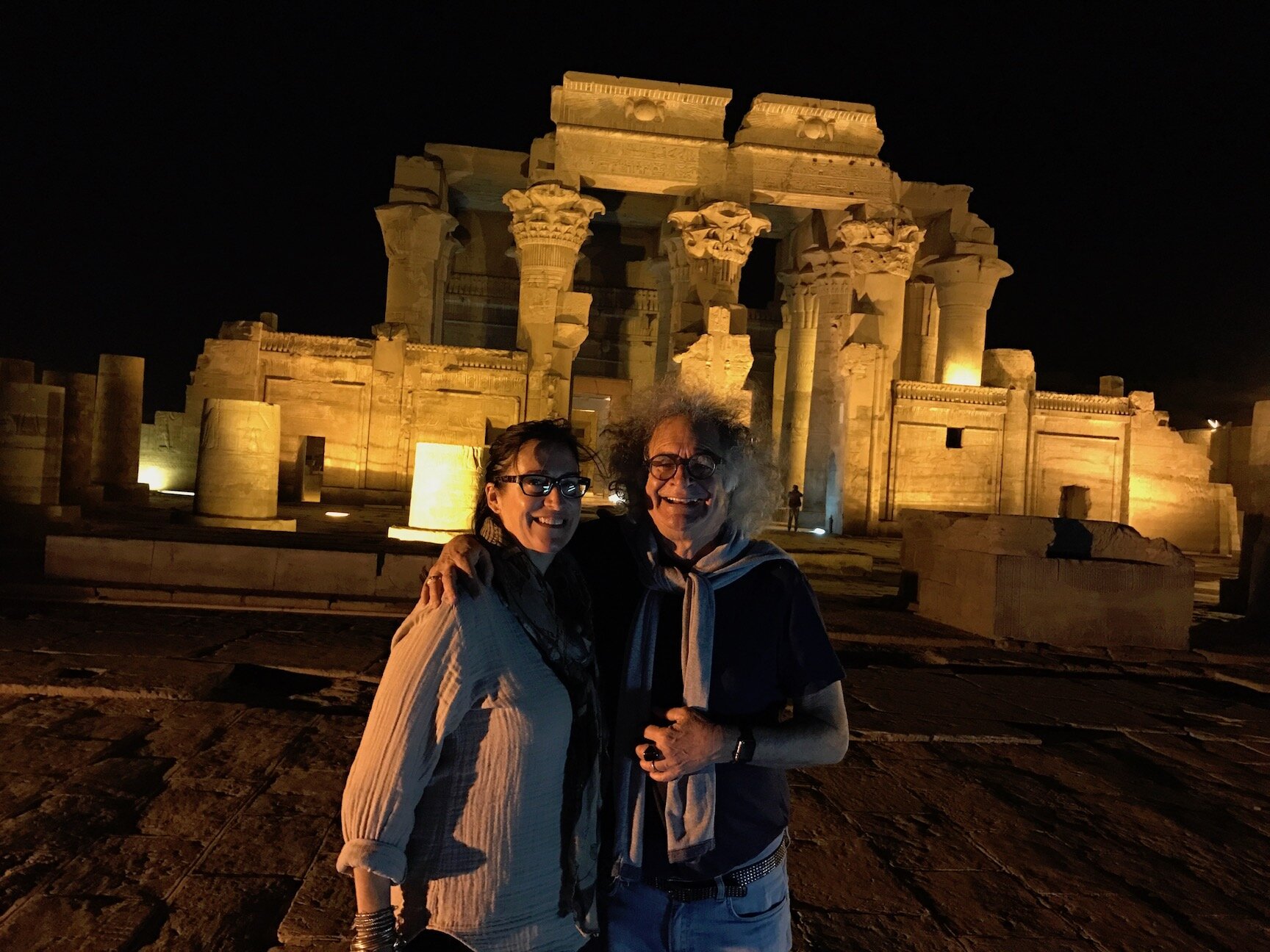[Visited In March 2017]
Day One
Which boat to take down the Nile was a difficult decision. There are usually more than 280 cruise ships that travel between Luxor and Aswan, but after the Arab spring only 20. One could take a wooden sailing ship (Dahabiya) with up to ten cabins. It's the more intimate, authentic way to travel like the aristocrats of yesteryear. The deciding factor came from a TripAdvisor review - “many ships will cancel the cruise if their minimum capacity is not met. The Oberoi Philae will sail if even one cabin is occupied.” This was a comfort in a “highly explosive” time, and a time of low tourism. In 2011, the ship was taken in for a total renovation. The Oberoi group was afraid to invest while the Muslim Brotherhood was in charge. After Al-Sisi was elected in 2014, and after 4 years of work, the Oberoi Philae finally made its first voyage in December of 2015.
When we boarded the Oberoi Philae we learned that of the 22 cabins onboard, only 5 were taken. There were 9 people total with a crew of 70. “Consider this your private yacht” said the general manager. And for a few hours it was. We were the first guests on board which gave us the liberty to photograph the Cruiser, people-free.
The Bar
The Lounge
The Pool
The Dining Room
Our Cabin
Our Sitting Area
Our bathroom
Karnak Temple Complex
After lunch we took our first outing to visit the Karnak and Luxor Temple complexes on the East bank of the Nile. Karnak is a 60 acre open air museum in Luxor. The name in Arabic stands for Fortified Village. It is second only to Giza as a tourist destination in Egypt. There are four sections of the temple, but only one, the Precinct of Amun-Ra, is open to the public. It took 2000 years to build the complex and its completion was overseen by 30 Pharaohs.
Karnak
The Avenue of the the Sphinxes line the sand road that leads to the temple complex, and they once connected the Karnak Temple to the Luxor Temple. The hundreds of ram-sphinx were symbols of protection. At the entrance were the Twin Obelisks, although there is only one still standing. The 80’ obelisk was carved from a single piece of pink granite with a pyramid shape at the top. Pairs of Obelisks were commonly placed at the entrances of Temples. Out of 28 obelisks in Egypt, there are only 6 remaining in the country.
Avenue of the Sphinxes, with or without ram heads
The Obelisks were the contribution of Queen Hatsheput, the second female Pharaoh. She was married to her half-brother (Thutmose II) and became queen of Egypt. When he died, she became guardian for his son (Thutmose III from a second wife) who was just 2 years old at the time. She co-ruled with him for 21 years. Her mummy was never found, and there are conflicting stories about her death by murder or cancer. Thutmose III was one of Egypts greatest military leaders, he expanded Egypt to include southern Syria in the North and Nubia (now Sudan) in the South.
Giant Ramses II and petite Nefertari at his knees
Hypostyle Hall is a 50,000 sq. ft structure that features 134 columns that vary from 32 to 40 feet in height covered with Intricate hieroglyphics (Hiero means ‘sacred’ and glyphic means ‘carving’). Besides the number of columns, their sheer scale was impressive.
The ginormous columns. People in lower right corner give you a good sense of the scale.
A Cartouche (usually a Royal name) using hieroglyphics
Luxor Temple
Luxor Temple was discovered in 1884 by an Italian professor, buried under centuries of ruble. It took almost 8-years to clear away all barracks, houses, and stores that made up the muslim quarter in medieval times. Luxor Temple was not built to honor a god or to memorialize the death of a Pharaoh, it is thought to be the place where kings were crowned.
Temple Carvings and Cartouches
The Temple and Palaces were built from sandstone bricks from Nubia and are surrounded with mud brick walls to separate ‘this world from the Gods.’ They used sandstone for the palaces because they believed your first life was brief. They built the tombs from granite because ‘eternity is your forever life.’ The entrance used to have two obelisks, one of which was moved to Paris and stands at the Place de La Concorde.
Obelisk by Day
Obelisk at Night
Besides the Avenue of Sphinxes, Luxor and Karnak were also linked by 6 barque shrines (sailing ships) used for festivals between the two temples. Seeing this monument at night with all of the dramatic lighting was incredible.
Luxor Temple at Night
Inside the temple there is still a functioning Mosque where Muslims have worshipped for over 3,000 years.
It turns out that of our four nights on the boat, two of them are spent docked. The first night we stayed in Luxor so we could continue our touring the next day. We had martinis in the bar and a delicious dinner in the Dining room. The staff was beyond attentive, there were almost 8 crew for every tourist onboard.
Day Two
We had an early wake up call, so we could return to the ship before the midday sun. Although there was no fetterai on the breakfast menu, the chef agreed to make it for me one day. On the way to the Valley of the Kings we learned the ‘Rules’ of how a King was chosen.
He is the first son of the Queen (the official wife).
If the King and Queen had a daughter, then she would marry the son of one of the Kings concubines (her half-brother) and he would become King.
If the King and Queen had no kids, the Queen would have to re-marry and her new husband would become the King, because the Queen is the Kingmaker.
If the Queen dies first, the King would have to marry his own daughter from the Queen.
Valley of the Kings
The Valley of the Kings is a vast Royal necropolis (an ancient cemetery) reserved for Kings and nobility on the West Bank of the Nile. There are 65 tombs from the Egyptian New Kingdom that archaeologists have been excavating for over 200 years. It was called City of the Dead as it is filled with thousands of tombs. Everyone - farmers, teachers, doctors, priests, Kings, Queens and their children - was buried on the West bank of the Nile because the sun rises in the East (re-birth) and sets in the West, where they would begin their journey to the underworld.
A Papyrus depicting the journey to the afterlife. Borrowed from the internet.
One ticket gave us access to 3 of the open tombs. The tombs are far from each other, and there is an asphalt road between them, so the sunshine yellow trams can easily move the thousands of tourists around. When its high season there can be up to 9,000 tourists a day. For those that chose to walk between tombs there are strategically placed benches shaded by pergolas where one can take a break.
Almost empty trams….
There are signs everywhere ‘No photography allowed inside the Tombs’, cameras must be left outside. But this is the time of the iPhone and no one is going to take your phone away. There were local men in native dress inside, to guard the tombs and to remind you not to take photographs. As it turns out, there were so few tourists at these sites, that the locals were desperate for cash. Given one or two American dollars, the guard allowed you to take photos until another tourist wandered in, or they would actually take your camera and quickly shoot the highlights for you.
Tombs in the Valley of the Kings
The tombs were carved into the cliffs and have long, sloped, rock-cut entrances that descend into the burial chamber. Stone steps have been built for tourists with a divider, designed to allow only a single file line in either direction.
A Model of the Site - Above Ground
A Model of the Site - Below Ground
The guides are not allowed inside to describe what you are seeing, to avoid stopping the flow of tourists. The walls and ceilings are decorated with “Scenes of Amduat” - drawings, carvings and texts, all symbolic imagery about the journey to the underworld. To decorate the tomb, they used multiple teams of rock cutters, plasterers and painters. The colors and details are amazingly well preserved for being thousands of years old.
Because the paintings were considered ‘Religious Texts’ the use of color was regulated and symbolic. Creation and rebirth (Blue), Power, life, victory, anger and fire (Red), Eternity, sun and gold (Yellow), Fertility, new life, and growth (Green), Death, the underworld, and night (Black), Purity, nobility and the sacred (White/Silver). They would fix the colors with egg tempera (eggs mixed with water, honey or milk as a glue) or use beeswax (encaustic) to bind the colors. They used repetition, color and shading to create dimension. In addition to all of the original artworks, there is graffiti in Greek, Latin, Phoenician, Cypriot and Coptic languages.
These are the story highlights from the tombs we visited:
King Akhenaten - Nefertiti was his Great Royal wife. Her name means ‘Beautiful Woman has come.’ Together Akhenaten and Nefertiti started a new religion worshipping only the Sun God and no others. This was a revolution in Egypt at the time. They were together for 12 years when Nefertiti disappeared. Akhenaten's’ monuments were defaced or dismantled by all subsequent kings trying to erase his family from Egyptian history. Because of his ruined reputation, carvings depict him with freakishly large hips, or together with his brother in an act of sodemy. It is thought that he is the father of King Tutenkamen.
King Akhenaten. His sculptures are a total modernist departure from all of the other Pharaohs.
There is much debate about his death, old theories that he died of injury or a plague, or that priests conquered and killed him, or he was murdered and his whole family went missing. In 2015 the thought was that Nefertiti was buried in Tuts tomb. In 1898 two mummies were found, ’the elder lady’ and the ‘younger lady.’ They originally thought Nefertiti was ‘the elder’ until they discovered that a lock of hair matched the DNA Queen Tiye. Recent DNA tests show that Tuts biological mother was the ‘younger lady.’
King Tutankhamen - King Tuts Tomb was discovered in 1922 by Howard Carter, it is the last time a tomb was found. Tutenkamen's wife was his half sister. Two fetuses were also found in the tomb, a 5 month old and a 7 month old. All of our guides agreed that Tut was not a great warrior, not a builder, and he had virtually no achievements. He was only famous because his tomb was found intact, with all of his treasures. I wrote about his loot, and his hoarder tendencies in my Cairo post. Our guide told us that Tuts Tomb had a false door which was used to trick the grave robbers - when they opened it they would fall into a well. He added that there were lots of skeletons inside.
Tuts Tomb and his Sarcophagus. You can see him on the wall in the striped headdress embracing Osiris - The God of the Underworld whose “love muscle” was lost forever.
Amenhotep II and King Tutankhamen where the only two Pharaohs actually found in their tombs. The others were removed due to worries about thieves.
Ramses II - was the first womanizer, he married sisters of the mayors of each of the cities in Egypt. They were all buried together. He had 48-50 sons and 40-53 daughters, the sons enjoyed the largest tombs. He ruled for 66 years, built cities, temples and monuments. His military expeditions included defeating sea pirates and conquering land in Syria, Libya and Nubia.
Ramses II or Ramses The Great
Nefertari was his ‘Chief Queen,’ or official wife. In addition to the mayors sisters, he married 4 of his daughters and one wife may even have been his sister. Nefertari was the most famous queen in Egyptian history. She could read and write hieroglyphics which was rare for a woman at that time. She was the step Mother of Tutenkamen and also his mother in law. It is thought that Ramses II built her a temple on Nubian Land because thats where she came from, and it was considered a sign of love. Her tomb is known as the ‘Sistine Chapel of Ancient Egypt.’ Jars found in her tomb contained several essences: lotus essence, sandalwood, and most notably ‘Secrets of the Sacred Desert.’ Our guide told us this was the Egyptian Viagra - it helps you and the husband on a Saturday night.
Nefertari
Ramses III - was thought to be the last great monarch. He ruled for 31 years, and died the victim of an assassination attempt led by one of his three wives. Known as the “Harem Conspiracy,” Ramses wife Tiye was upset that Ramses III chose the son of his other wife to succeed him. So she and her son Pentaweret gathered butlers, treasury officials, military men, scribes and women from the harem to plot his murder. This was all confirmed by the discovery of the Judicial Papyrus of Turin, the actual transcripts from the 3 trials that sentenced 38 people to death by execution or suicide. The women from the harem even tried to seduce the judges to secure their freedom but the judges were caught and punished.
Image of Ramses III. Borrowed from the internet.
When the mummy of Ramses III was originally found they believed that he suffered no injuries. But in 2011 a forensic team found excessive bandages around his neck, as well as a chopped off toe. Further scans done in Cairo showed that under the bandages his throat had been slashed down to the vertebrae.
Bandages hiding the wound. The Mummy of Ramses III
Death Rituals
Our guide was very animated as he told us a few basics about the life and death rituals of the Kings. Embalming was compulsory because it was believed they would return to that body. Good embalming takes time: a Queen takes 60 days, a King takes 70 days, old people take 30 days, and poor people 10 days. Being old or poor means you won’t be properly embalmed. The Egyptians also believed that you returned to your body at whatever age it was when you died, but with the mind of a 20 year old. Sounds like a movie plot? They also believed you come back on a star so this, Mohammad tells us, is why their arms are crossed over their chests - so you become the 5 points of the star (head, two elbows, two legs).
There were two ways to get to Heaven: one, by climbing the Pyramid, the man-made mountain to heaven, or two, by sailing on the Nile. You just keep walking or sailing until you find the hole in the sky. After being ‘judged’ you ride back to Egypt on a star, and are returned to your embalmed self with the mind of a 20 year old. I think I’d prefer my mind to be my chronological age, returned to the body of a 20 year old.
The judgement lasts 12 hours - and each hour you are asked a different question:
Did you Kill anybody?
Did you Look at your Neighbors wife?
Did you Commit Adultery?
Did you Eat a Pig?
Did you Eat Catfish? NEVER EAT CATFISH! I found this, of all the questions, the most hilarious.Then we were told the story of Osiris. When he was 20 years old, Osiris was killed by his brother Seth. Seth chopped him into 14 pieces and Isis (his wife) managed to find 13 of the 14 pieces. What was missing? His ‘fertility member’ which was eaten by a catfish. So Isis reconstructed his ‘fertility member’ by ‘magic’ to bring him back to life to impregnate her. She then gave birth to Horus. Osiris is portrayed in Egyptian art as a green young man.
Did you Lie?
Did you Steal?
Did you Cheat anyone?
Did you Pollute the River Nile?
Did you Upset your Parents?
Did you Hurt anybody?
Did you miss the 12th and final question during the guides speech? Yes, Yes I did.
And, to great relief, we learned that the Sun God will forgive you, even if you answered yes.
Dier al Medina
The Village that was
Dier (church) al Medina (Town), was a village for all of the artisans that had the sacred jobs building the tombs in the Valley of the Kings. This is the only location where paintings exist to illustrate the daily lives of this community of workers and their families. Women had servants supplied by the government to help with daily chores, and they were very well respected. The wife even inherited two-thirds of the family wealth. Today men get two-thirds and wife one-third of the inheritance. The men also have the right to divorce if the wife is debauched or doesn’t give birth.
Family tombs represented pyramid shaped entrance.
Temple Medinet Habu 1100BC
Yoga like an Egyptian
The Temple Guardians
The temple was built by Ramsses III, one of Ramsses II sons and was a copy of a Syrian Castle. It's famous for its reliefs showing the defeat of the Sea Peoples. The Sea Peoples sailed around the mediterranean and invaded Turkey, Syria, Cyprus and Egypt. There was ongoing reconstruction here because when they were building the Aswan High Dam, the water and soil rose up and submerged the temple.
Faded Columns
A remarkable ceiling of color and carvings
Sekhmet was the goddess protector of Pharaohs who led them into war, and ironically was also able to heal them. Sekhmet had the body of a women head of a lion. It is said that she killed men and drank their blood. The story is the Sun God Ra tricked her by turning the Nile red (with wine or beer and pomegranate juice). She thinks its blood so she drank it and became drunk and then mankind is saved. The truth is that the Nile does turn red every year when it becomes filled with silt.
Statue of Sekhmet, the lush.
Colossi of Memmnon
A Painting of the Colossi by David Roberts and borrowed from the internet.
The twin statues are of the Pharaoh Amenhotep III in a seated position, guarding his temple. To the side of his legs are figures of his wife, Tiye, and his mother. In its time the temple was the most opulent ever built, but it stood in the middle of a floodplain for the Nile, and was washed away. The statues stand over 60 feet tall, and each weigh 720 tones, or 1.4 million pounds. They were badly damaged by earthquakes and were cobbled back together.
Stone Transformers
Back to the Cruiser
We returned to the Boat for lunch and had the afternoon free from touring. In our room was a yellow and white Swan, one of many ‘towel animals’ that greeted us during our stay.
The swan is actually a winter visitor in Egypt.
Floating down the Nile on the sundeck was a tranquil, serene experience. The banks were lined with a mix of king, date, and banana palms. There were fields of sugarcane, with a background of eroded sandstone cliffs, sometimes close, sometimes like mirage, a ghost in the distance.
Prolific Palms
Smooth Sailing
The Nile is the only major river in the world that runs from south to north. Its water has an average depth of 8 - 10 meters and has a dark olive color that is remarkably clear even in the most populated areas. Cows, buffalo, sheep, goats, wild dogs and donkeys wander along its banks. Sometimes a small island sprouts up in the middle of it. Locals on skiffs and birds fish together in the shallow reeds. The houses in small villages are simple mud brick structures with colorful laundry hanging on the line. An hour or two of desert sun will make them dry. There are a few ambitious two story houses made of concrete with the possibility of more floors to come in anticipation of a son bringing home a bride. The inhabited and farmed land extends 35 meters in either direction. They used to celebrate three seasons - Flood, Drought, and Harvest, each lasting 4 months. The most fertile land in Egypt lives on the Nile. The rest is just desert.
Life on the Nile
Before dinner we sailed through the Essna lock which links Edfu and Luxor. There are ‘gates’ that control the height of the water and will fill or empty, to rise or lower the ship. During the 6 minutes it takes to cross the Lock, we were entertained by salesmen on each side throwing scarves onboard for us to buy. It was a sort of honor system, if you wanted to keep it you would toss the money back to them.
Shopping with Honor
Day Three
Edfu : The Temple of Horus
The Philae sailed to Edfu early so we could be there by 8 am. From the boat we took a horse drawn carriage (a caleche) through downtown Edfu and arrived at the Temple of Horus, dedicated to Horus the Falcon God.
Our Caleche
Horus with Friend
Teple of Horus. I had to lay down to get it all in the frame.
It was built by the Tolemies and took 180 years. It is the best preserved Temple in all of Egypt, even its ceiling was intact, it was just missing its color. I almost preferred the carvings sans paint.
Horus (Figure on the left) is represented with a Falcon Head and champagne bucket on his head. The North is considered lower Egypt (white crown) and the South is considered Upper Egypt (red crown). When the two crowns are combined, they look like champagne in a bucket.
One of the Guards soaking up the sun.
It was finished by Ptolemy XII, the father of Cleopatra the VII. There were many Cleopatras, but Cleopatra the VII was the most famous, our guide referred to her as Elizabeth Taylor. “Elizabeth Taylor spent her honeymoon with Julius Caesar going down the Nile.”
Marriage festival on the Nile, or, Cleopatras Honeymoon.
A different day, a different guide, a different story of Horus, which was mostly about his father Osiris. This one had a bit more detail about why you should never eat Catfish. Osiris is the god of fertility and the underworld. He was married to Isis. Everyone loved King Osiris and his brother Seth was jealous. Seth was also jealous that his wife had had a child with Osiris. So Seth made a plan to kill Osiris, overthrow him, and become King. One night, at the end of a banquet, Seth presented a coffin and the challenge that whomever fit inside would win the coffin. So everyone took turns. Osiris fit perfectly, and once he was inside Seth sealed it and threw him into the Nile. Isis found Osiris dead. She begged the Sun God Aman Ra to bring him to life for 2 minutes so she could get pregnant. She disguised herself as a falcon over his body until she “received his seed.” Furious, Seth found the coffin and then proceeded to cut Osiris into 14 pieces and scatter them in the River Nile. Isis gathered 13 of the 14 parts. The missing part was his “love muscle” which was eaten by a catfish. I love how guides come up with other names “fertility member,” “love muscle,” to avoid the word penis! The result was the banning of fish at any banquet in Medieval times. Horus, the Falcon God, was born with the mission to avenge Osiris’s death. When Horus found his Uncle Seth near the river, he stabbed him.
French Target Practice inside Solar Disk and Cobra (target) riddled with bullets.
The Temple Laboratory or The Parfumerie
Inside the Festival Hall in the Temple of Horus was the Temple Laboratory. The room is perfectly preserved because it was filled with sand from desert storms and neglected. It was found and restored in 1717. Carved into the walls are the recipes for various incense and perfumes prepared by priests and used for used for rituals.
Carvings of Perfume Offerings to the Gods
Recipes and Formulas in Hieroglyphics - a complete language using syntax, letters and pictures.
We returned to an especially creative towel animal, the Annubis (Jackal), on our bed.
We had lunch back on the boat as we sailed from Edfu to Kom Ombo, for our next and final stop of the day.
Twin Temples of Kom Ombo - Kom Ombo means City of Gold. It is a double temple composed of two halls, two courts, various rooms, built for two brothers, the Northern Temple for Horus the Elder (the Falcon God) and the southern temple for Sobek (the Crocodile God). Temples were usually symmetrical o balance Justice and Truth. The temple was destroyed by earthquakes, flooding of the Nile and nearby builders who borrowed stones.
Kom Ombo at Night.
That afternoon we had some downtime from the swirl of stories and scandals of the Pharaohs, before afternoon tea and dinner was served. I decided to enjoy the Spa. There was a masseuse from Bali who was the only female member of the crew. She called the ship her “Golden Prison.” She doubled as a beautician so I was lucky to get a much needed blow out. The only magazine in the ‘Salon’ was from Lebanon, another middle-eastern country I am curious to visit. I was impressed with how modern and exciting it looked. It featured articles on the latest designer hotels, Beruit Fashion Week and an Art Fair.

